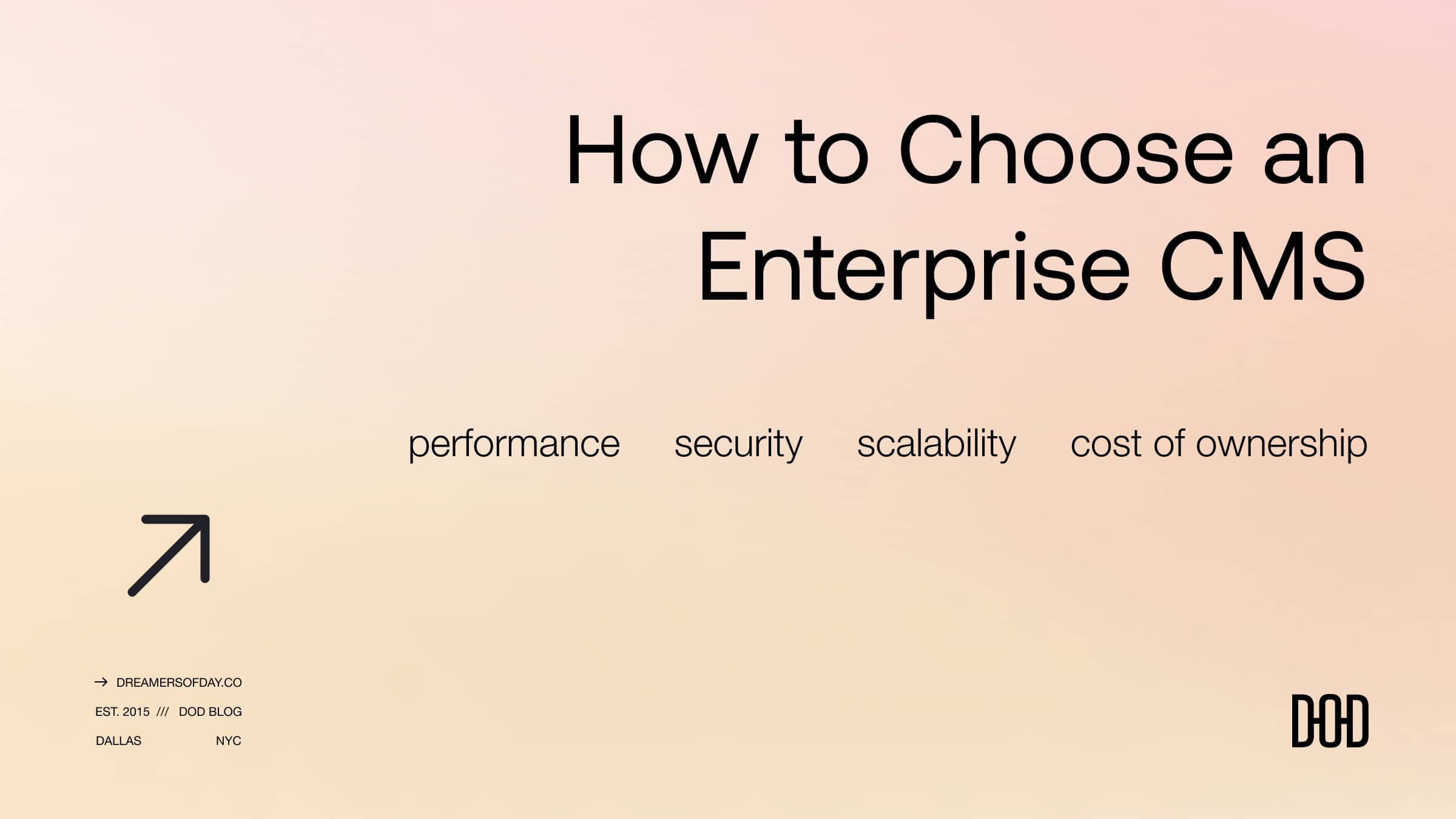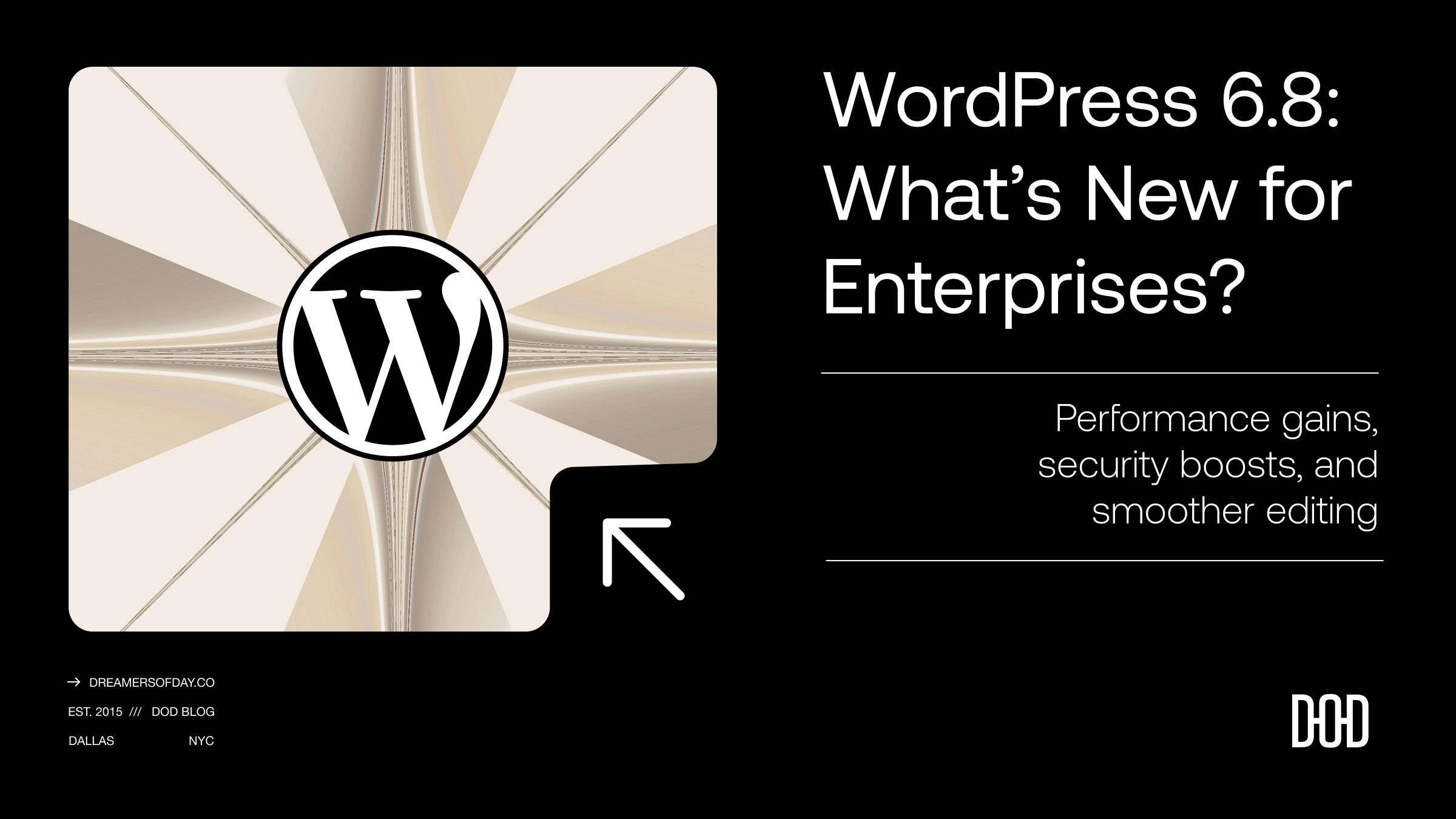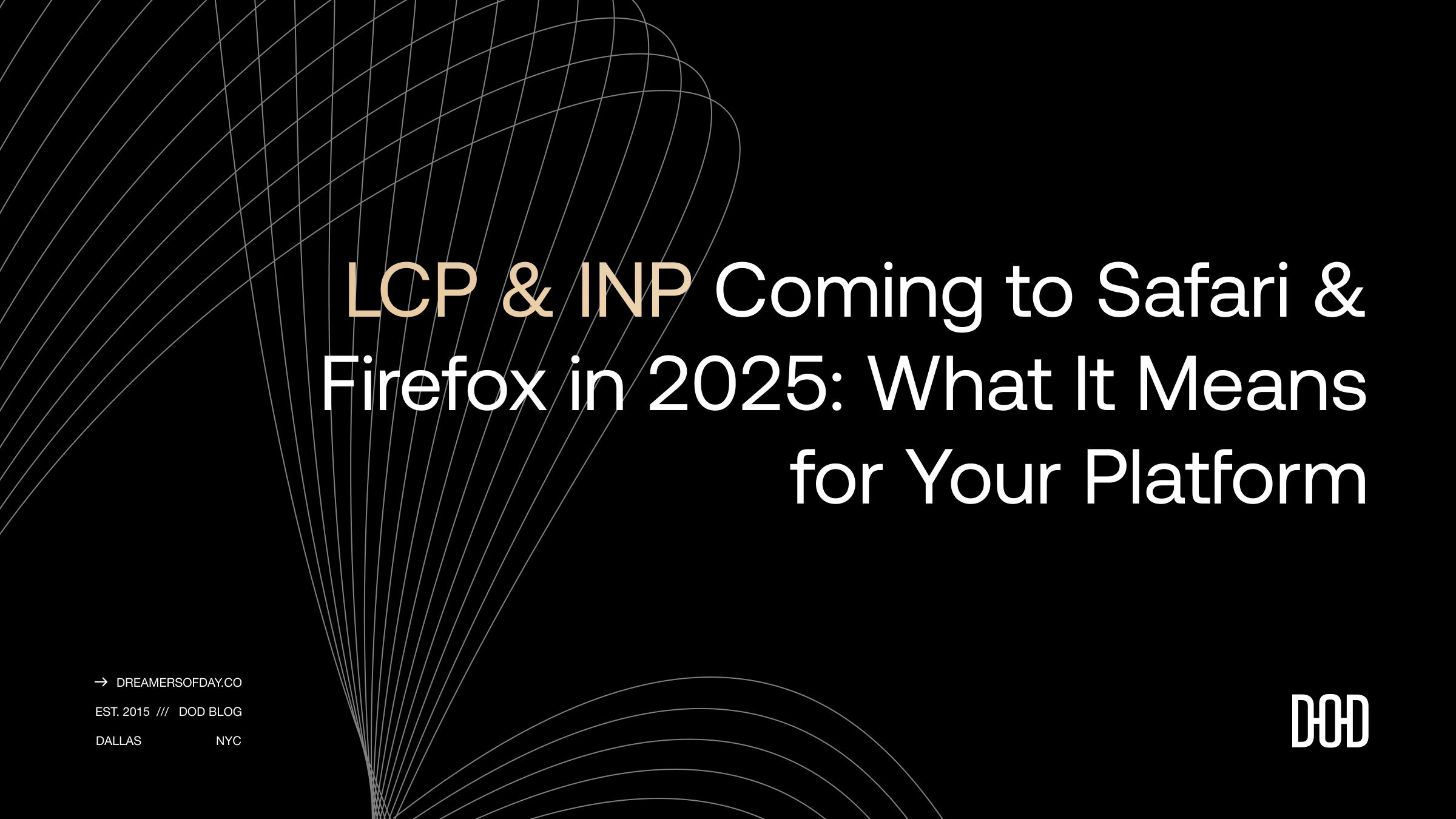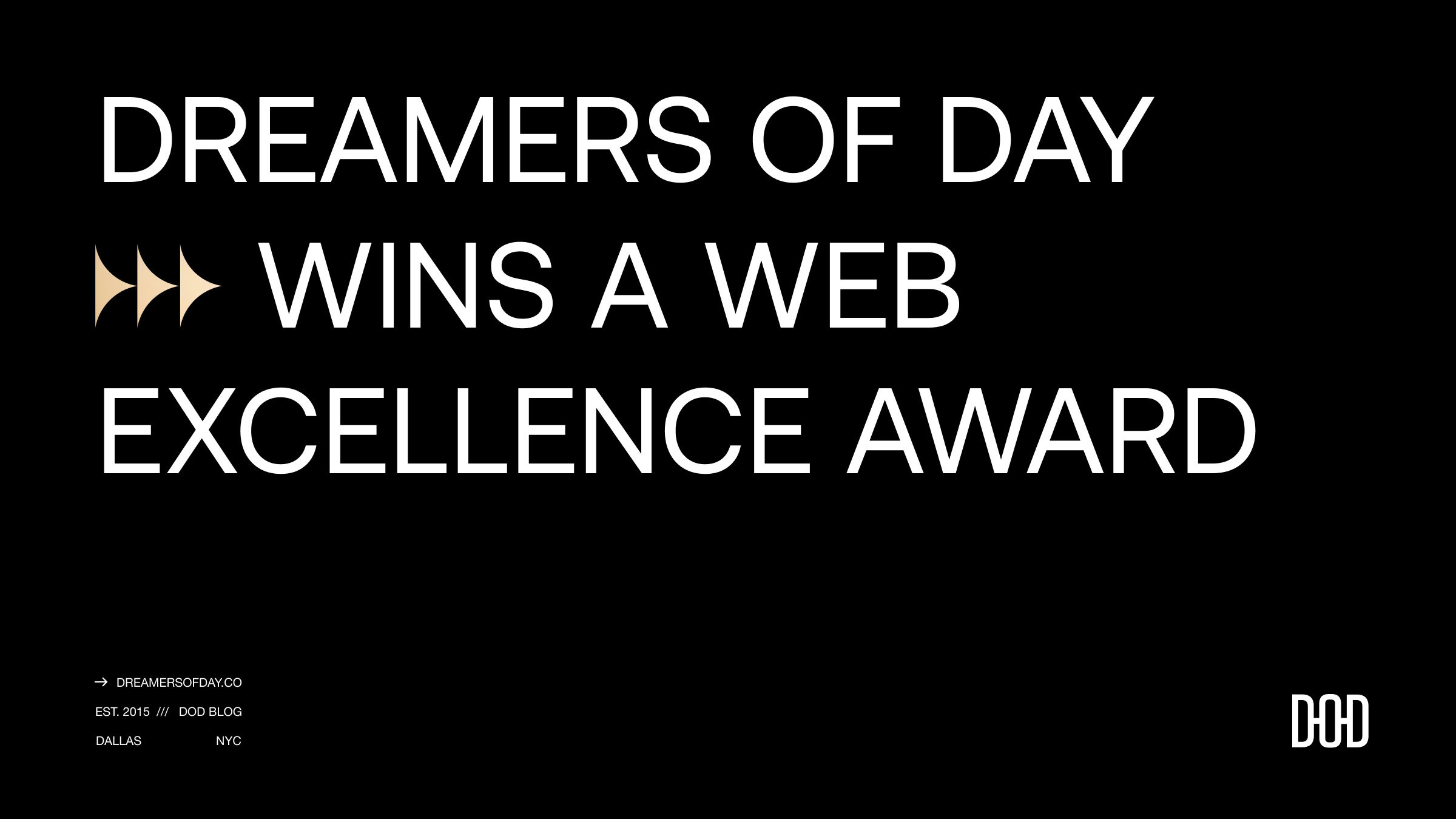How to Choose an Enterprise CMS

Choosing the right Content Management System (CMS) is an important decision for any organization. It affects everything from your website’s security and scalability to its user experience and long-term maintenance. The ideal CMS should not only address your current business needs but also scale with your growth, support complex workflows, and adapt to future technological advancements.
With numerous CMS options available, it’s essential to evaluate your organization’s specific requirements and select a platform that aligns with your business goals. Here are the key factors to consider when choosing an enterprise CMS:
Scalability
At the enterprise level, your CMS must deliver fast performance and seamlessly scale to accommodate increasing traffic, content, and functionality demands. The core architecture should be robust enough to handle sudden traffic spikes without compromising speed or reliability, ensuring a smooth experience for users.
Choosing a CMS that scales with your business allows you to expand functionality and add new features or integrations as needed, without requiring costly or time-consuming system overhauls. This flexibility ensures your digital infrastructure can grow in step with your business, whether you’re increasing content, adding users, or incorporating more complex workflows.
A scalable CMS is essential for future-proofing your digital operations, and avoiding the necessity to migrate to a new platform 2-3 years down the line.
Performance
Solid site performance is crucial for providing a rewarding user experience, and since the advent of Google’s Core Web Vitals metrics, is also an important ranking factor for SEO. Your on-page content could be perfectly optimized, but if your site has poor performance, you will still struggle to rank highly.
A well-optimized CMS should deliver fast load times across all devices and connection types right out of the box, while also offering the flexibility for developers to fine-tune performance based on your audience’s specific needs. This balance ensures an optimal user experience without sacrificing the ability to make targeted improvements as your site grows.
Did you know: A page load time on mobile of 10 seconds increases the bounce rate by 123% when compared to a one-second loading speed.
While some might argue that proprietary (custom-built) CMSes can be built with a performance focus from V1, avoiding the need to fine-tune an existing solution, platforms like WordPress can also achieve excellent performance through proper configuration, caching mechanisms, and performance-enhancing plugins—all while retaining the benefits of regular updates from a specialized community.
It should also be noted that building and maintaining a CMS is a substantial task, one that even leading media companies like Vox Media couldn’t manage, eventually making the switch to WordPress.
Security and Compliance
Security should be a top priority, particularly in industries like healthcare, finance, or government, where data privacy and regulatory compliance are non-negotiable. Your CMS must have strong security features to protect both your website and user data, ensuring compliance with strict standards.
Look for platforms that provide essential security measures, such as SOC 2 compliance, SSL/TLS encryption, regular security patches, and ongoing monitoring. While WordPress requires attention to third-party plugin security, it offers powerful security plugins and regular updates to help protect your site.
For highly regulated industries, such as healthcare or finance, it’s also crucial to choose a CMS that can adapt to specific regulations like HIPAA or GDPR. Open-source platforms like WordPress offer flexibility by allowing you to configure the necessary security and compliance tools through plugins, ensuring you meet regulatory requirements.
Ease of Use and Editorial Control
An enterprise CMS should enable your marketing and content teams to make quick updates without relying heavily on IT or development teams, allowing for faster turnarounds and greater agility.
A platform with an intuitive interface, drag-and-drop builders, and customizable templates lets non-technical users manage content efficiently. While some platforms, such as Adobe Experience Manager (AEM) or Sitecore offer advanced editorial features, they often require steep learning curves and IT involvement.
User-centric content management systems, such as WordPress or Wix enterprise strike a balance, providing user role permissions, draft management, and approval processes that streamline collaboration, ensure content consistency, and speed up time-to-market. These built-in workflow controls empower teams to maintain high-quality output while meeting deadlines effectively.
Plugins and APIs
A strong CMS should seamlessly integrate with the platforms you already use to run your business. Many enterprise CMS solutions offer robust third-party integrations, allowing you to connect with tools like Salesforce, HubSpot, and Google Analytics.
This integration capability helps streamline operations, automate workflows, and enhance data sharing across your digital ecosystem. Whether you’re managing marketing campaigns or tracking performance metrics, these integrations ensure a unified and efficient experience without the need for extensive custom development.
Did you know: WordPress has the largest marketplace of plugins of any CMS, with more than 60,000 free and paid plugins?
Customization
A flexible CMS should provide robust customization options that not only meet your business needs, but also offer granular control over user roles, permissions, and workflows. This ensures that your internal teams can manage content securely and efficiently. Platforms with built-in features for user management allow you to assign specific roles with varying levels of access, providing enhanced security and accountability.
Additionally, a well-structured CMS should support audit trails and version control (either natively, or through a plug-in), ensuring that changes can be tracked, reviewed, and reversed if necessary. This level of customization and control is crucial for maintaining oversight, especially in large organizations where multiple users contribute to content management.
Cost of Ownership
When choosing an enterprise CMS, it’s crucial to consider the Total Cost of Ownership (TCO) beyond just initial setup costs. Some platforms, such as Umbraco, AEM, or Sitecore, have high recurring licensing fees that scale alongside as your site grows—and that’s before you consider hosting or maintenance.
Other content management systems, such as WordPress or Drupal, have no licensing fees for the core software or updates, allowing businesses to allocate resources to growth, innovation, plugins, or advanced hosting solutions that improve overall site performance.
With lower operational costs and flexible scalability, these platforms ensure that enterprises can adapt quickly without costly overhauls, reducing the need for specialized personnel or repeat development cycles to enjoy new features.
Community Support
When choosing a CMS you’ll be faced with a choice: A Proprietary (or closed) system, where the source code is owned and distributed by a single business entity, such as Sitecore or Contentful, or Open Source, where the source code is freely available for anyone to view, modify, and distribute—Like WordPress, or Joomla.
At Dreamers of Day, we believe in open-source solutions. Because the code is readily available and free, CMSs like WordPress have developed global ecosystems of contributors, who continuously improve the core code base, providing regular updates, new features, and enhanced performance.
This collaborative approach offers transparency, flexibility, and faster problem-solving, allowing businesses to customize their platform to meet specific needs without being tied to the red tape of proprietary solutions.
Technical Support
There will come a time in every website’s lifecycle when it requires technical support. Whether it’s to build out new features, fix (potentially critical) bugs, or make proactive improvements that keep your site competitive, support options are an important factor to consider when choosing a CMS for your site.
Some platforms like Adobe Experience Manager or Sitecore provide dedicated enterprise-level support packages, however, they come with a significant cost—and given their low market share, third-party development talent can be difficult to source and employ.
On the other hand, open-source solutions like WordPress or Drupal can access paid support through managed hosting providers or dedicated enterprise agencies, ensuring the level of support needed for enterprise environments.
Learn more about Dreamers of Day’s Managed Website Services
Our Choice: WordPress
While there are many CMS platforms available, open-source solutions like WordPress offer a compelling mix of flexibility, scalability, and cost-effectiveness, making them attractive for enterprises.
The open-source model allows for extensive customization, and the vast ecosystem of plugins and integrations gives businesses the ability to craft tailored digital experiences that evolve with their needs. For organizations focused on agility, future-proofing their digital infrastructure, and maintaining full editorial control, an open-source platform like WordPress is a strong contender as the CMS of choice.
Conclusion
Choosing the right CMS for your enterprise is a critical decision that impacts your digital strategy for years to come. By considering factors like performance, security, ease of use, and cost of ownership, you can make an informed decision that aligns with your business goals.
Open-source platforms like WordPress offer a compelling mix of flexibility, scalability, and cost-effectiveness, but it’s essential to evaluate all your options based on the unique needs of your organization.
Dreamers of Day is here to help you navigate these options and make the best choice for your business. Contact us today to explore how we can help you build a future-proof, enterprise-grade digital platform.


